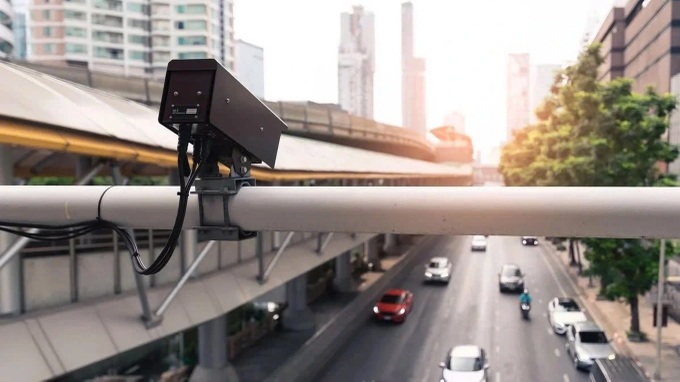
A surveillance camera on a street in Hanoi.
According to the plan, some 40,200 cameras, including over 12,000 PTZ cameras and 28,200 dome cameras, will be installed during the period.
Of the figures, more than 23,700 cameras will be used for security, nearly 300 others for military activities, and the remaining 16,200 for traffic surveillance.
The city currently has over 20,400 cameras operating for these purposes.
Speaking at a meeting to launch the Traffic Safety Year 2025 campaign on January 17, the Vice Chairman of the National Traffic Safety Committee, Le Kim Thanh, stressed that the application of digital traffic violation enforcement using surveillance cameras is being promoted to shift public thinking from avoiding penalties to complying to ensure safety for oneself and others, the official said.
As 2025 marks the final year of the 2021–2025 socio-economic development plan, Thanh underscored the need for decisive implementation of Directive 23, which focuses on enhancing traffic safety.
Key objectives for 2025 include reducing traffic accidents, fatalities, and injuries, fostering a culture of compliance and safety among citizens, and addressing congestion and pollution caused by traffic activities.
Thanh emphasised the importance of preventing prolonged congestion in major urban centres like Hanoi and Ho Chi Minh City and along critical transportation corridors and hubs.
The strategy involves increasing digital tools, particularly the widespread adoption of camera-based traffic violation enforcement. This approach aims to encourage voluntary compliance with traffic laws and to instil a culture of accountability.
The vice chairman called for strict penalties for violations, including driving under the influence, speeding, overloading vehicles, and other dangerous behaviour. He also emphasised the importance of exemplary conduct by officials and public servants.
